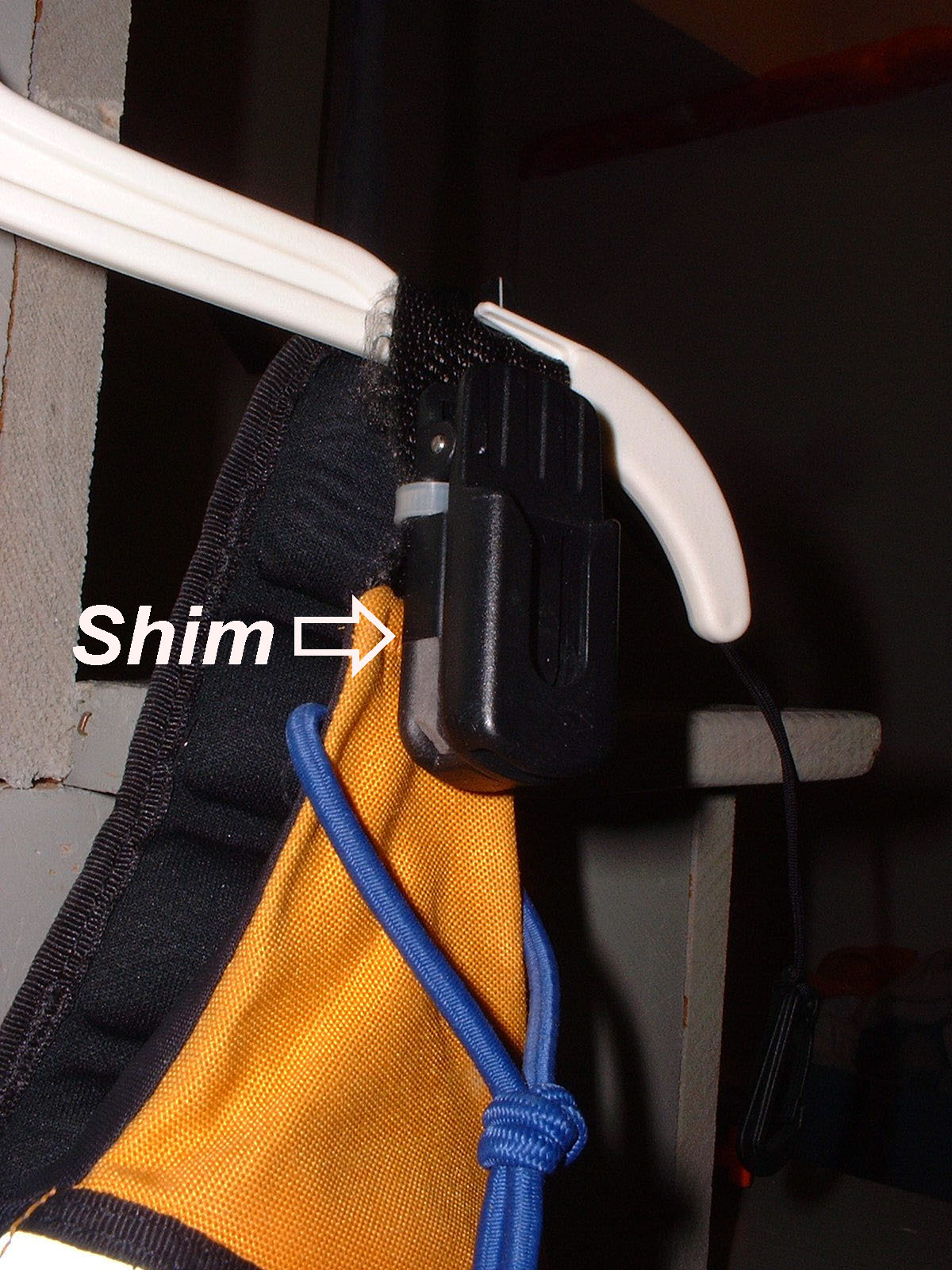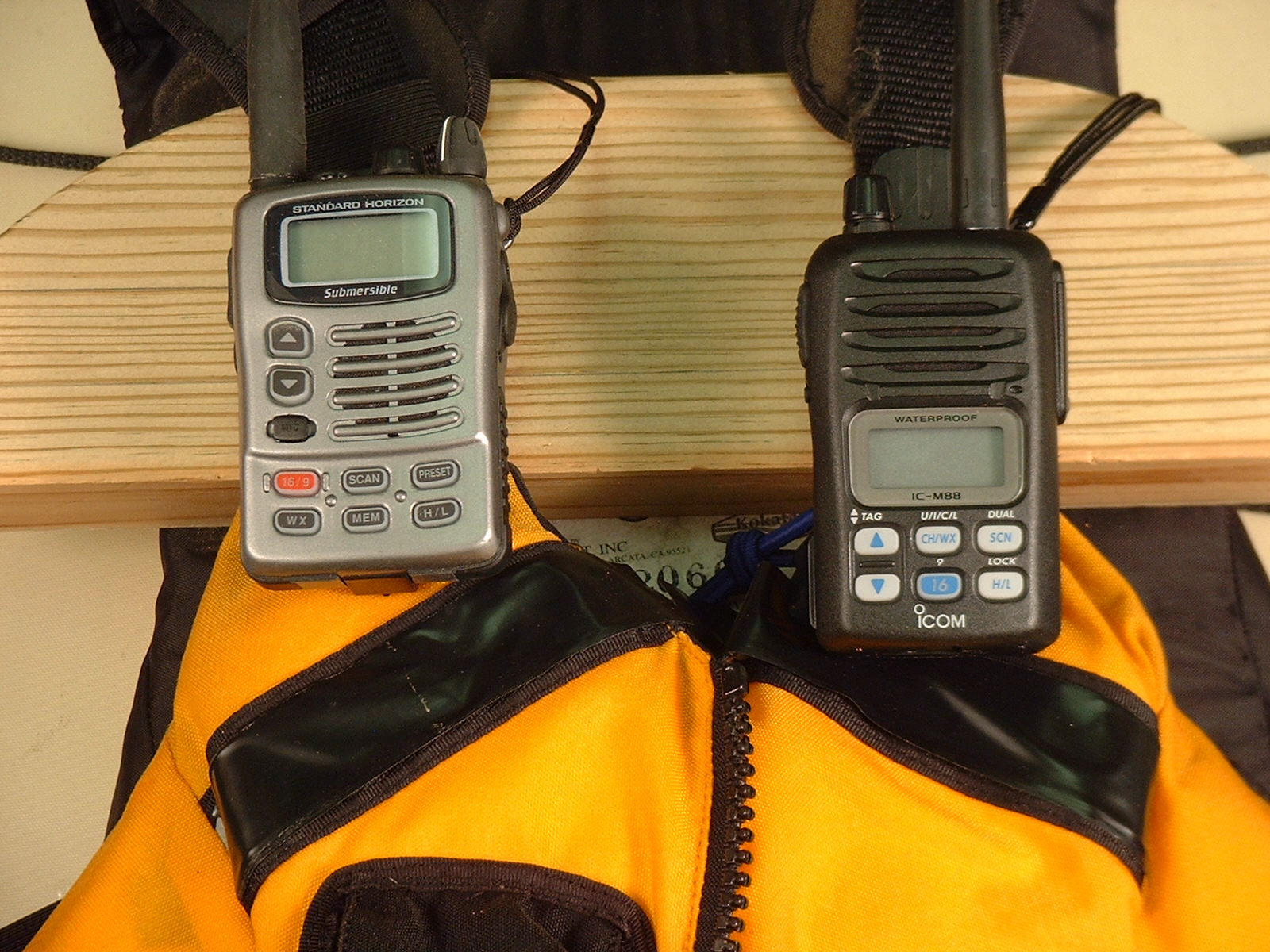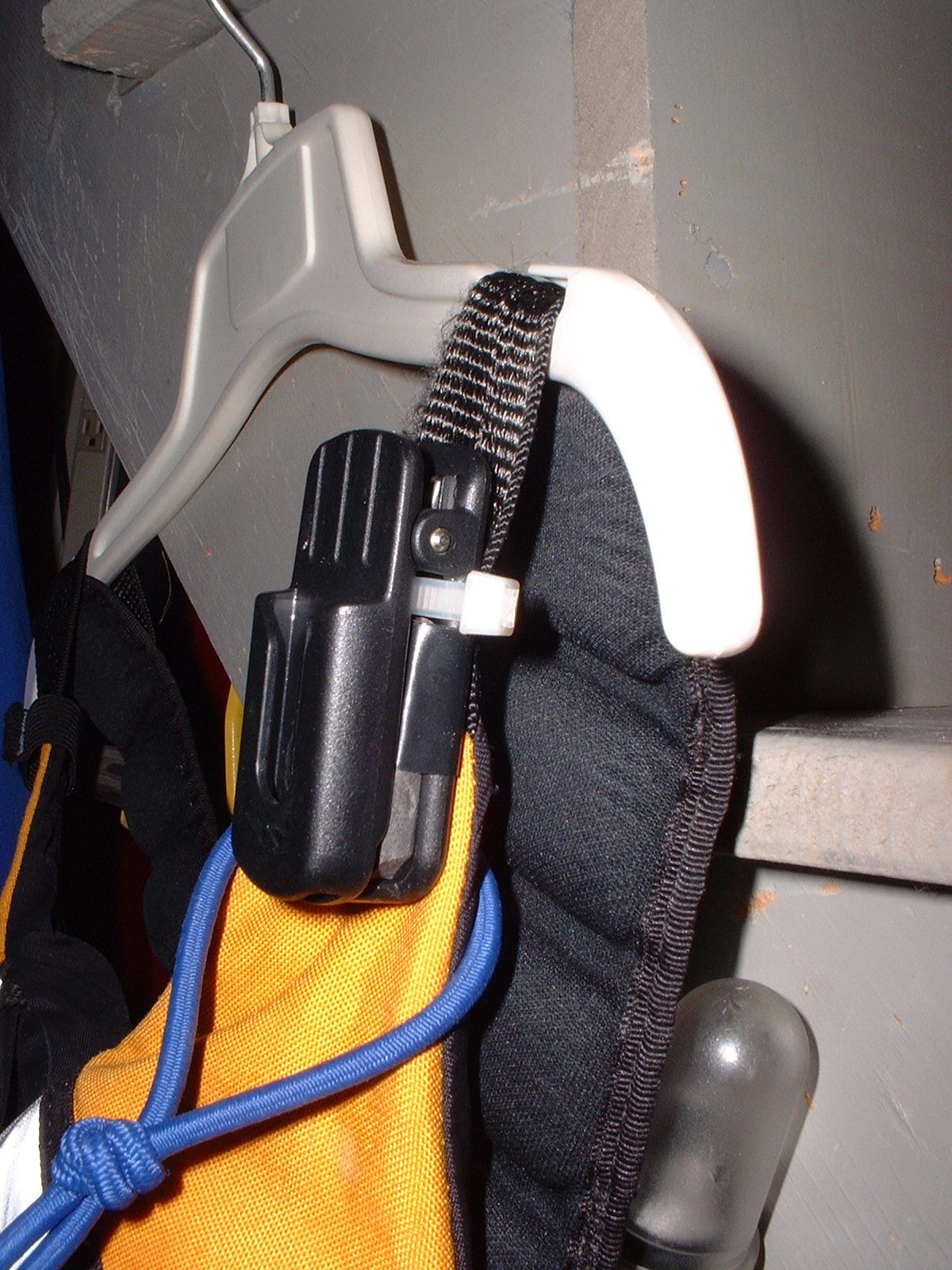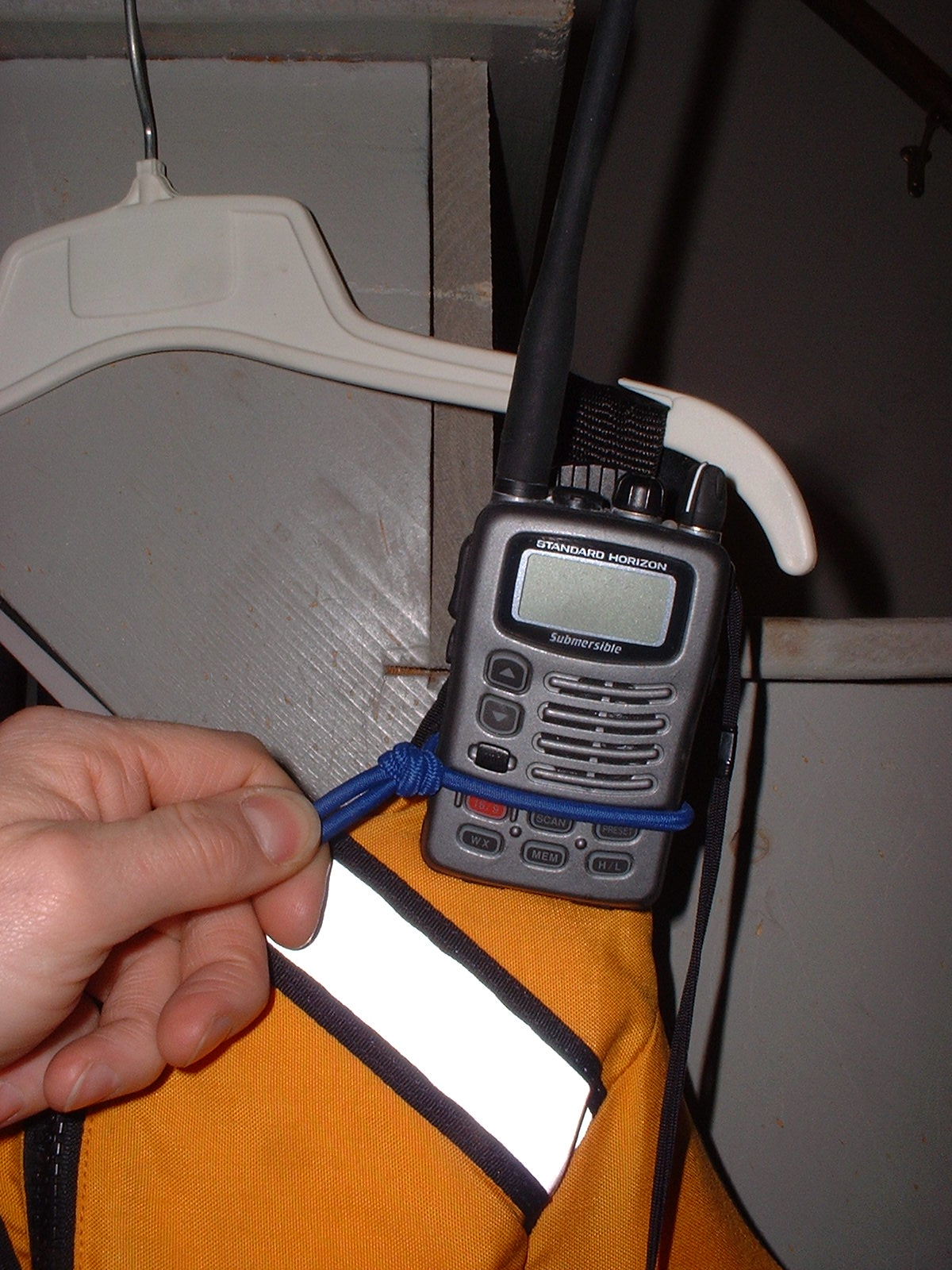A VHF radio is a key piece of kayaking safety gear. Though it’s typically rarely needed for more than checking the weather or communicating within a group of paddlers, it could potentially save lives in an emergency situation. However, that’s entirely dependent on being able to access it quickly and easily when you need it, regardless of the conditions you find yourself in. In choosing how to carry your radio, you need to assume that you would not need it unless you were in difficult conditions, potentially swimming and possibly even without your boat.
There are many ways that paddlers carry their radios:
It can be carried in or on the boat, which imposes significant limitations.
- In a hatch, which makes it little more than extra cargo, since you’ll never be able to access it in rough conditions.
- In the cockpit, which is nearly as bad as in a hatch, since you have to pop the spray skirt to get to it. This typically requires two hands, making it nearly impossible in rough conditions and you risk flooding the cockpit.
- On the foredeck, which at least makes the radio accessible. However, if you lose the boat, you lose the radio. It can also be difficult to stow after using it. A rather long tether is required in order to avoid loss, which can create an entanglement hazard.
It can be carried on one’s person, which at least insures that you’ll always have it with you.
- In a PFD pocket, which keeps the radio with the paddler and secure. Depending on the design of the pocket, it will probably only take one hand to access the radio, but it may take two to stow it, which can be problematic. Again, a tether is required to prevent loss, albeit a shorter one than required for a deck mount. The risk of entanglement is lower, too.
- Mounted to the shoulder of the PFD, which has several advantages:
- It can be operated with one hand and either hand, which is critical in rough conditions.
- It positions the radio close to your ear, so you can hear well in wind and surf.
- You never have to stow it, since you don’t have to take it off to use it; you just turn your head toward it.
- It only requires a short tether to secure it, eliminating any significant risk of entanglement.
Based on my own experience, shoulder-mounting is the best method from a use and access standpoint. It does have one limitation, which is that you must use a submersible radio, preferably with a JIS/IP 7 or 8 rating, because the radio is exposed to the elements.
With a good quality radio, this is not a problem, but some people don’t feel comfortable with carrying their radio outside of a waterproof bag. It’s understandable, but using a bag creates other limitations.
- You have to carry it in a pocket or on deck, since there is no way to shoulder mount it securely.
- It reduces both the speaker and microphone volume.
- Operating the controls is more difficult, particularly with gloves on.
Since you’re reading this tutorial, I’ll assume that you’re OK with getting your radio wet. As long as you rinse it after every use and periodically inspect and grease the seals, you should not experience any problems
Without further ado, here is my method for shoulder mounting. It’s designed for radios that have a rotating belt clip that requires you to invert the radio in order to remove it. It may be adaptable to other mount types as well. This system has worked well for me for many years, in a wide range of conditions and through lots of rescue practice.

The belt clip for a Standard Horizon radio is mounted on PFD shoulder strap using a heavy duty wire tie. The wire tie must be pulled tight, to prevent the radio from moving on the strap. The loop of bungee is used to retain the radio when rolling or in the event of a capsize.

A shim is taped to the inside of the spring-loaded belt clip to keep it from sliding through the wire tie. I used a piece of Minicel foam, but almost any material is suitable (wood, rubber, aluminum, plastic, etc.). The reason for the shim is that if the hook on the end of the clip slides up to the wire tie, it can pop out. With the shim in place, it can’t.

The radio is inserted into the clip, then the bungee is stretched around it. It sits conveniently between the rows of buttons on the radio’s face. The bungee prevents the radio from inverting and coming out of the bracket. The tether in the picture serves as a backup against loss (It’s not clipped to the PFD strap in this photo).
There is one issue with this particular setup; the antenna is on the side closest to the paddler. Although this never caused me any problems, it is preferable to mount the radio on the shoulder that puts the antenna to the outside.

Two VHF radios in their respective clips. This illustrates the difference in having the antennas toward the outside. I assure you that this was just a test and that I don’t actually paddle this way!


